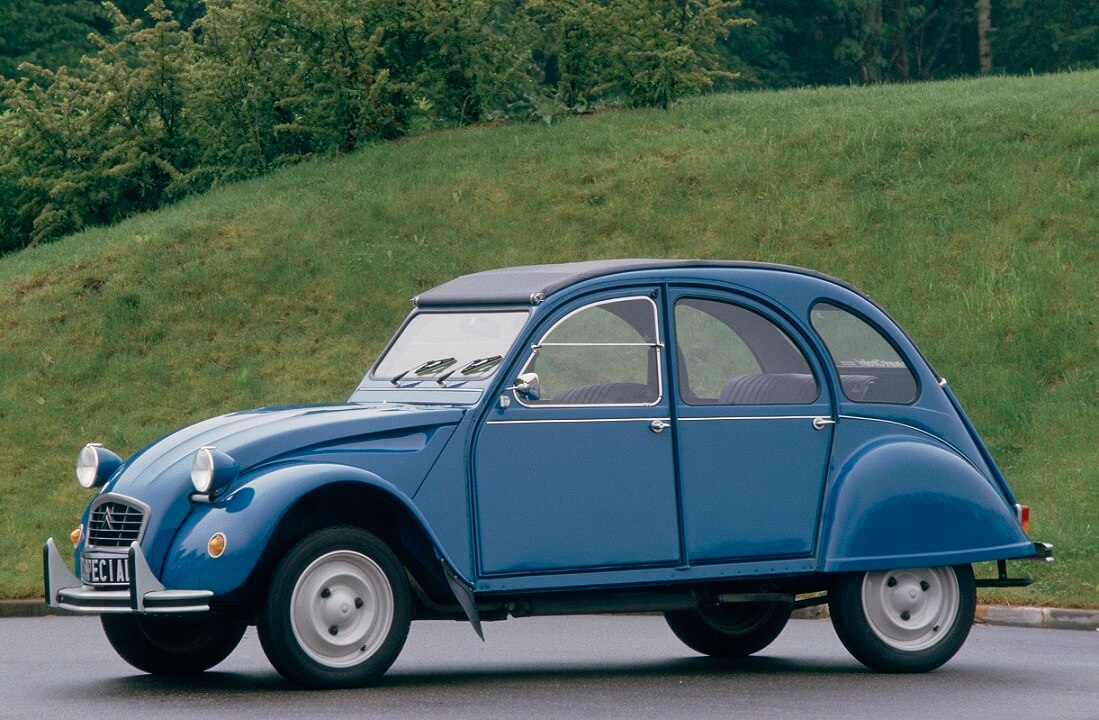
What engine is the 2 cylinders boxer: It is air-cooled, flat-twin, four-stroke engine with pushrod operated overhead valves and a hemispherical combustion chamber. In cars it has been used by Citroen for the 2 Cv and the Dyane.
What is the 2 cylinders boxer displacement: it is in a range between 375 cc and 602 cc
How much is the power of the 2 cylinders boxer: the power of the 2 cylinders boxers is in a range from 9 bhp to 28 bhp
The earliest engine version was 375 cc displacement with power output of nearly 9 bhp (6.6 kW) for the 2 Cv models.
A second increased version was a 425 cc and 435 cc with initially 12 bhp (9 kW) and later 18 bhp (13 kW) and the final evolution reached 602 cc one giving 28 bhp (21 kW) at 7000 rpm.
The engine was designed by Walter Becchia and Lucien Gerard, and look clear to be similar to the BMW boxer motorcycle engine.
The 2CV used the wasted spark ignition system for simplicity and reliability and had only speed-controlled ignition timing, no vacuum advance taking account of engine load.
The inlet and exhaust manifolds were welded together into a single unit, with exhaust pipe and inlet tract abutting each other directly under the carburettor at an enlarged 'heat chamber'. Heat from the exhaust warmed both the metal and the air/fuel mixture inside the chamber, ensuring full vaporization of the fuel for greater combustion efficiency. The chamber also served as a reservoir of fuel/air mixture downstream of the carburettor body, allowing each cylinder to draw an equal and balanced amount of mixture for further efficiency and smooth-running. The heat chamber principle was especially suitable for an engine running at Wide open throttle and heavy loads for long periods of time, as was intended for the 2CV, when the throttle plate in the carburettor would be fully open, the manifold vacuum would be low and the exhaust temperatures would be high.
Unlike other air-cooled engines the 2CV's engine had no thermostat valve in its oil system. The engine needed more time for oil to reach normal operating temperature in cold weather. All the oil passed through an oil cooler behind the fan and received the full cooling effect regardless of the ambient temperature. This removes the risk of overheating from a jammed thermostat that can afflict water- and air-cooled engines and the engine can withstand many hours of running under heavy load at high engine speeds even in hot weather.
Like many other air-cooled car engines, the oil sump was wide and shallow, being formed from extensions to the crankscase castings in the form of an inverted 'T'. The exterior of the sump was formed with cooling fins and the underside protruded below the level of the chassis rails, exposing the sump to the flow of air as the car drove along. The shape of the sump ensured that as much of the oil within as possible lay close to the cooled metal on the underside, further helping to regulate the oil temperature. As with the oil cooler, this cooling effect was unregulated and varied greatly depending on air temperature, vehicle speed and engine load.
The engine's design concentrated on the reduction of moving parts. The cooling fan and dynamo were built integrally with the one-piece crankshaft, removing the need for drive belts. The use of gaskets, seen as another potential weak point for failure and leaks, was also kept to a minimum.
As well as the close tolerances between parts, the engine's lack of gaskets was made possible by a unique crankcase ventilation system. On any 2-cylinder boxer engine such as the 2CV's, the volume of the crankcase reduces by the cubic capacity of the engine when the pistons move together. This, combined with the inevitable small amount of "leakage" of combustion gases past the pistons leads to a positive pressure in the crankcase which must be removed in the interests of engine efficiency and to prevent oil and gas leaks.
To avoid over pressure has a combined engine "breather" and oil filler assembly which contains a series of rubber reed valves. These allow positive pressure to escape the crankcase (to the engine air intake to be recirculated) but close when the pressure in the crankcase drops as the pistons move apart. Because gases are expelled but not admitted this creates a slight vacuum in the crankcase so that any weak joint or failed seal causes air to be sucked in rather than allowing oil to leak out.
As well as features intended for durability and efficiency, the early 2CV engines were also significantly under-tuned, making much less power than was theoretically possible. The original 375cc engine featured deliberately small-diameter inlet tracts and a small-diameter carburettor with conservative fuel jet sizes. This restricted both the engine's power output and its maximum rotational speed to far below the actual limits of its component parts, ensuring that however hard it was driven and despite extremes of temperature, it would not be close to its ultimate limits. The 375cc engine produced its 9 bhp at 3500rpm and peak torque at 2000rpm , the 602cc has 28 bhp max power at 6750rpm
The engine is designed to achieve maximum reliability and cheap maintenance cost.
If the starter motor or battery failed, the 2CV had the option of hand-cranking, the jack handle serving as starting handle through dogs on the front of the crankshaft at the centre of the fan. This feature, once universal on cars and still common in 1948 when the 2CV was introduced, was kept until the end of production in 1990
Source:
http://www.geocities.ws/boraceltic/Mechanics/schemes.htm
https://en.wikipedia.org/wiki/Citroën_2CV
Edited by arrabbiata